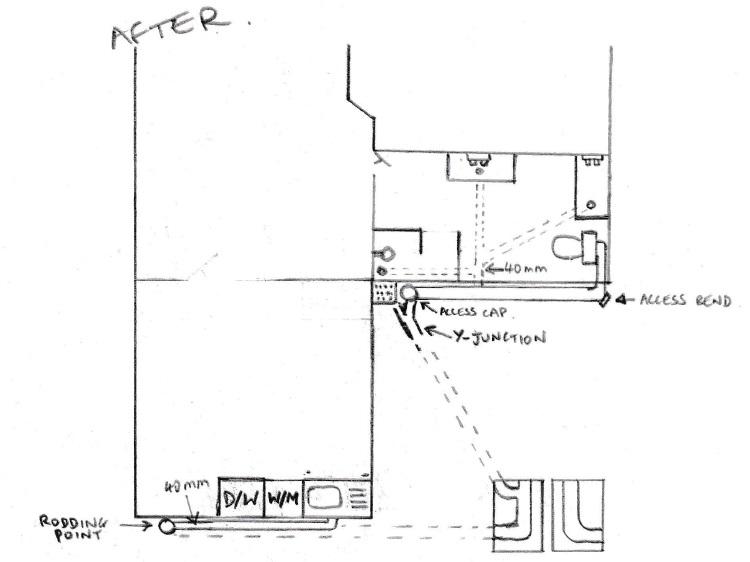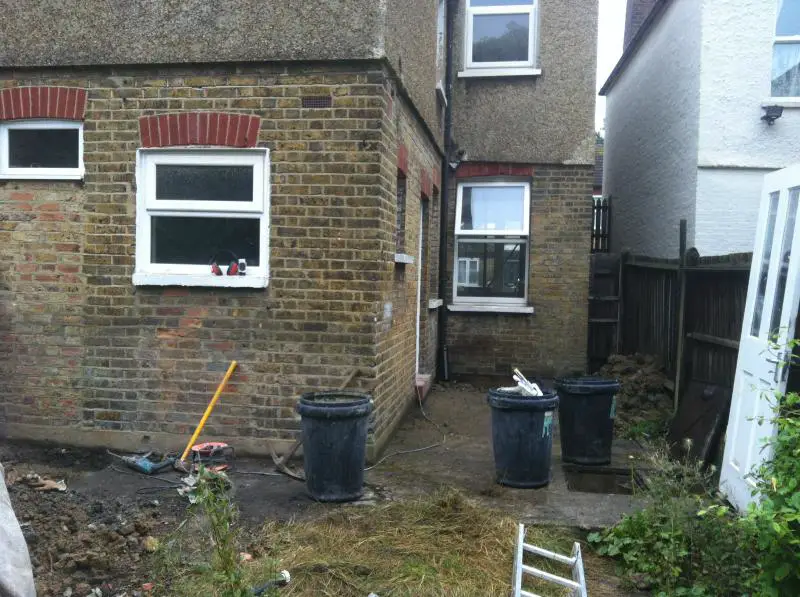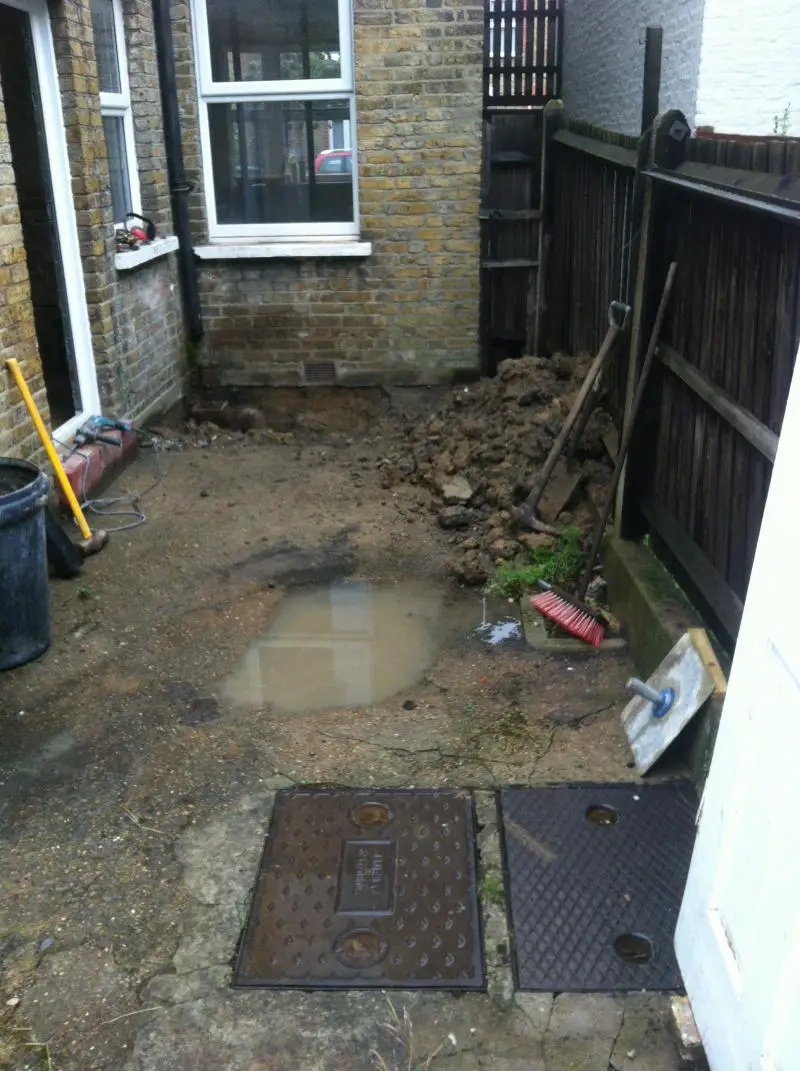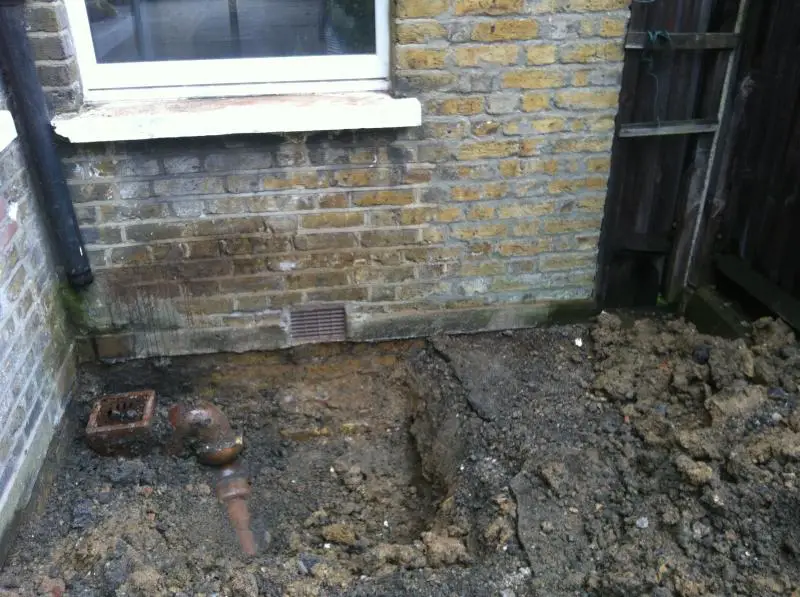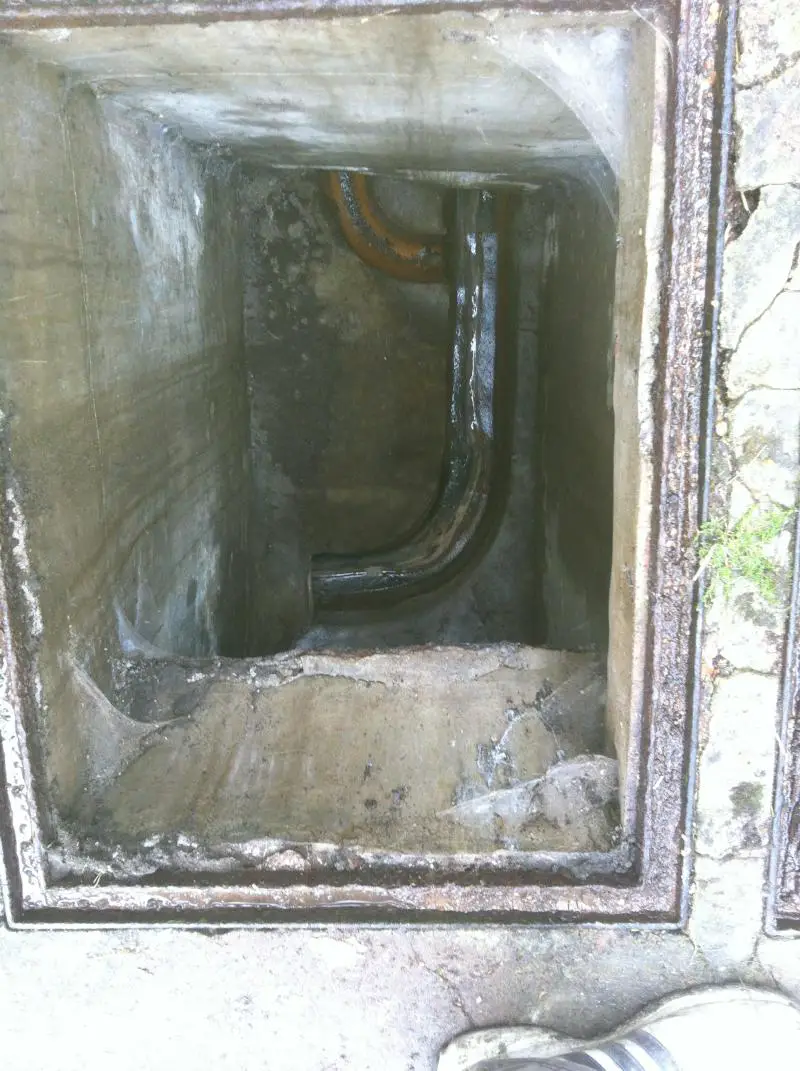Hi all
I have the BCO coming over on Monday to discuss the drainage for moving the bathroom downstairs. As I'm new to this, I just want to do some homework and gather some advice so I don't look like a total plonker.
The house is a standard Victorian end of terrace; current arrangement has a small bath and sink upstairs and a downstairs toilet. I want to move the bathroom downstairs and change location of kitchen sink. See diagram 'before' and 'after'.
Luckily (this being Victorian) the manhole covers are on my property so I can see what's going on.
I plan to run 110mm black plastic from the new toilet just above ground level and then take it down and connect it up to the old clay via a Y connector and a rubber coupling, the other end of the Y connector taking the rainwater hopper. 40mm waste will join the black 110mm along the way to take bath, basin and shower.
I also plan to dig down to find the clay that took the original toilet waste and bring this directly up so that I can take the 40mm waste to this for kitchen sink and dishwasher/washing machine.
I have what I consider to be fairly significant falls between the floor level inside and the start of the clay drainage outside (66cm) and the start of the clay drainage and the end of the clay under the manhole (160cm).
1) Does this seem an OK method and an allowable method for BCO?
2) Also, where I have marked rodding point, I have already dug down a meter but am yet to find the clay drain. Do I need to quit my whining and keep digging or am I missing something?
3) Should I keep the open hopper or am I better off taking the downpipe underground?
Cheers
I have the BCO coming over on Monday to discuss the drainage for moving the bathroom downstairs. As I'm new to this, I just want to do some homework and gather some advice so I don't look like a total plonker.
The house is a standard Victorian end of terrace; current arrangement has a small bath and sink upstairs and a downstairs toilet. I want to move the bathroom downstairs and change location of kitchen sink. See diagram 'before' and 'after'.
Luckily (this being Victorian) the manhole covers are on my property so I can see what's going on.
I plan to run 110mm black plastic from the new toilet just above ground level and then take it down and connect it up to the old clay via a Y connector and a rubber coupling, the other end of the Y connector taking the rainwater hopper. 40mm waste will join the black 110mm along the way to take bath, basin and shower.
I also plan to dig down to find the clay that took the original toilet waste and bring this directly up so that I can take the 40mm waste to this for kitchen sink and dishwasher/washing machine.
I have what I consider to be fairly significant falls between the floor level inside and the start of the clay drainage outside (66cm) and the start of the clay drainage and the end of the clay under the manhole (160cm).
1) Does this seem an OK method and an allowable method for BCO?
2) Also, where I have marked rodding point, I have already dug down a meter but am yet to find the clay drain. Do I need to quit my whining and keep digging or am I missing something?
3) Should I keep the open hopper or am I better off taking the downpipe underground?
Cheers


